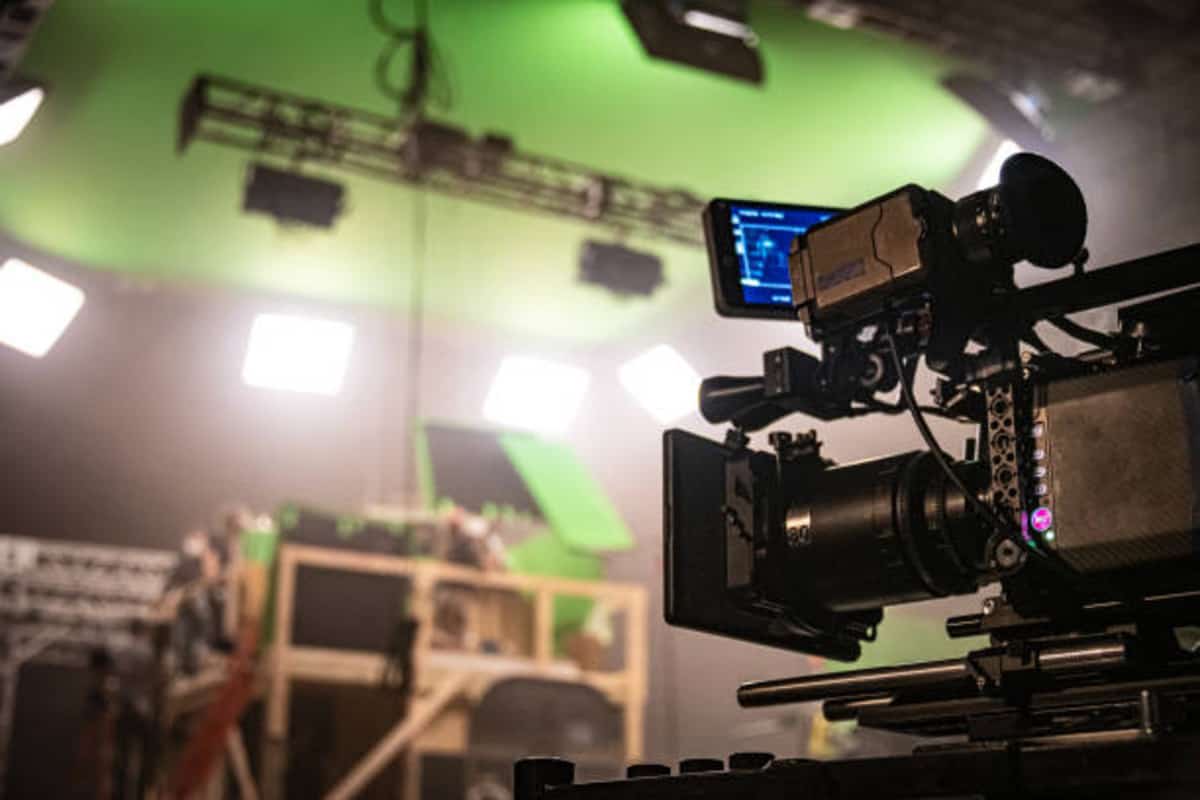Career Opportunities in VFX and their Salaries
Check out Some of the Career Opportunities in VFX. Also, this article provides a brief description of these careers and their salaries.
When you watch movies or music videos, the delights of the unbelievable people, settings, stunts, structures and activities that look genuine might astound you.
However, they are not genuine in the true sense. The central brain developing these actions and pictures is VFX production.
Advertisement
Also, check out Career Opportunities in Photography.
Aside from movie production, VFX is also employed in the creation of video games, TV advertising, and music videos. We will introduce VFX and the career options for anyone interested in this role.
What is VFX
VFX is an acronym for visual effects. It uses computer technology and other tools to manipulate the imagery recorded to create the desired footage where the scenes may appear convincing but not real or practical.
The primary reason why VFX is used is that the scenes to be showcased are entirely impossible, life-threatening, or outrageous in terms of the cost of production.
Advertisement
Are VFX and SFX the Same?
Contrary to popular belief, SFX and VFX are not the same things. Special effects, abbreviated as SFX, are video upgrades that improve the visual quality of a video by using props, costumes, prosthetics, pyrotechnics, and other aspects.
Types of VFX
The following are the types of VFX available.
- Motion Capture VFX
- Computer-generated images (CGI)
- Compositing VFX
- Matte Painting
- Animation
VFX is an exciting area to engage in because it is not entirely based on technology but also includes using one’s imagination and creative sense. Additionally, VFX careers are categorized based on how they are performed and the nature of the work.
The sections include pre-production, production, computer-generated department, technical, and compositing.
Pre-production section: involve the generation of the ideas, a stage where the ideas are conceived through research, imagination, creativity, and brainstorming. In addition, the plan for executing the visual effects to be used is mapped out at this stage.
Production section: In the production section, the first phase of actual execution begins. There are constant forth and back deliberations between the production teams and the VFX crew on adjustments and following the plan to arrive at a common goal.
Composition section: This is where the computer-generated images and shots are integrated from the actual recording. The stage is where the outcome is decided.
Technical section: involves the area where monitoring and maintenance of the technical aspects of the software, tools, and equipment used for the creation.
Here we will explore a few careers/jobs across the sections and give an overview of their duties.
Career Opportunities in VFX
There are quite a number of Career Opportunities in VFX. Some of these career opportunities are:
- Previsualization Artist
- VFX Editor
- Production Runner
- Animator
- Compositor
- Effects Technical Director
Previsualization Artist
Using editing skills and imagination, a previsualization artist creates a plan of how the characters, scenes, environment, and other features would look.
They collaborate with a concept artist to generate ideas and innovations, providing sketches and setting the duration for each motion moved by the character.
Duties of a Previsualization Artist
A previsualization artist will do the following tasks.
- Sketch and develops the 3D animatics for each project
- Create and generates shooting sequences following the plot or the ideas presented by a concept artist.
- Create a character that complements the narrative or the movie’s themes.
- Enhance and polish mocap animation.
- Demonstrate innovation while ensuring that the shot continuity of the sequence is accurate.
- Serve as a source of resources and inspiration for coming up with ideas.
- Assist the director, concept artist, VFX supervisor, and other team members in the project’s development.
- Plan the camera angles for each shot, the color scheme, the motion, and the timing of the sequence that will be employed.
Also, check out Career Opportunities in Animal Husbandry.
How much Does a Previsualization Artist Earn?
Previsualization artists earn well for their services. From the salary survey conducted by Glassdoor, the average salary of a previsualization artist is $84,536 per year.
VFX Editor
A VFX editor makes sure visual effects are added to the video with the use of some tools.
We have two kinds of VFX editors, the in-house and client-side. The former works in partnership with the VFX artist to ensure that the final results meet the desired goal of the movie production.
The latter actively participates in recording the footage, highlighting areas where modifications are required and validating those shots that are okay for the film production.
Duties of a VFX Editor
VFX editor performs the following as part of their roles and responsibilities.
- Create the offered sketched people, settings, and surroundings
- Keep abreast of both recent and historical market developments.
- Oversee material resources management, including camera notes, footage, dialogue, screenplays, sound effects, graphics, and special effects
- Troubleshoot problems that arise throughout the VFX editing process.
- Plan and oversee timing plans appropriate for the story’s requirements, the budget, and the deadlines.
How Much does a VFX Editor Earn?
Payscale reports that the annual average salary of VFX editors is $51,839.
Production Runner
Production runners are generally known as assistants for the members of the film production team in the VFX studio. They run errands, assist production crews, and perform clerical tasks as part of their responsibilities.
Although being a production runner might not be lucrative as other prestigious in the field, it is one way to get insights into movie production and how it works. It is a stepping stone to starting a career in the area.
Duties of a Production Runner
The following are the roles and responsibilities of a production runner.
- Manage the production team’s and the equipment’s logistics and transportation.
- Responsible for arranging laundry, groceries, package pickup, and equipment rental for the production team.
- Organize the team’s meals by receiving orders from the group and ensuring everyone gets their order on time.
- Keep track of spending by keeping receipts and invoices on hand.
- Make copies of the call sheets, screenplays, director’s notes, and other required papers.
- A Production Runner Establishes a production meeting schedule and reminds everyone to attend.
- Respond to phone calls on behalf of the crew members.
- Ensure all paperwork is filed and completed accordingly.
How Much Does a Runner Earn?
According to Glassdoor, the average salary of a production runner is $36,710 per annum.
Animator
An animator is a skilled professional that uses software (simple or sophisticated) to bring characters, objects, and images to life. They provide the images and characters with the ability to move with a series of movements and express emotion.
Also, check out Business Technology Jobs.
Duties of an Animator
An Animator Carries out some of the duties below:
- Look through screenplays and storyboards to develop the animation.
- Create the timing and speed of a character or object’s motions
- Troubleshoot the animation’s technical problems to find and fix them.
- Pay attention to critiques and comments to make project adjustments.
- Keep clear, intelligible working documents that can be shared with others.
- Produce VFX animations in 2D and 3D.
- Co-develop animation pipelines and animation rigs for people, vehicles, and objects with the VFX supervisor, the director, the character artists, the software engineers, and the VFX artists.
- Ensures the animated items’ or characters’ aesthetics are of high grade.
How Much Does an Animator Earn?
ZipRecruiter puts the average salary of an animator for a year at $53,540.
Compositor
Compositors combine sequences of shots, digital assets, visual effects shots, matte paintings, and color extractions into one single frame for seamless transitions at the end of the production process.
Duties of a Compositor
The duties of a compositor are as follows
- Perform compositing tasks for CG renderings and live-action plates.
- Extract mattes from blue/green screen photography.
- Conduct 2D and 3D camera tracking.
- Search for critical visual effects shots when creating a sequence.
- Study the trends and advancements as composition technology develops.
- Create compositional templates from scratch.
- Perform Keying and background editing.
- Work closely with the production team and VFX crews.
How Much Does a Compositor Earn?
The annual average salary of a compositor is $45,101 per the reports from Zippia.com.
Effects Technical Director (FX TD)
An effects technical director uses computers and technologies to create digital manipulations to create sound effects such as explosions and other effects like fire, smoke, and the like.
They collaborate with VFX artists and provide them with the necessary digital assets in terms of the effects that can be used in their sequence.
Duties of Technical Director
- Create infrastructure, tools, and processes
- Create and keep pipeline workflows and tools.
- Manage and deploy the hardware and software requirements for production
- Develop workflows, procedures, and resources for documentation that support technical workers and artists
Salary
According to Comparably reports, the average salary of an effects technical director is $80,600 per annum.
Final Notes on Career Opportunities in VFX
There are numerous prospects in the multi-billion dollar movie and video production sector. The field of visual effects is large and offers a variety of professional paths.
VFX entails using software and a camera to create and modify characters, objects, sounds, and environments. There are various VFX production sub-units, which means there are numerous employment choices.
Anyone interested in the field needs to be exceptionally imaginative, creative, organized, and skilled with a camera or the appropriate software, as the case may be.
The area is lucrative, and since the movie business is growing, there is currently little evidence that demand will drop anytime soon.
Before you go, check out Information Technology Jobs.







One Comment
Comments are closed.